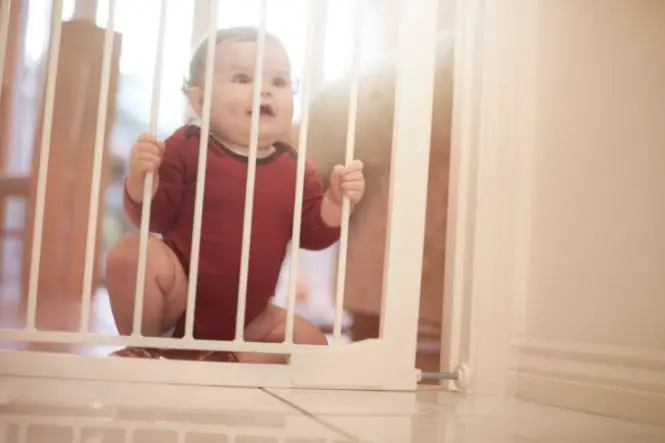As a safety conscious parent reading this site, chances are you are also vigilant about putting rubbish in the bin, maybe recycling as well. But are you aware of how hazardous bins and rubbish can be?
The main sources of germs in our homes are food and water, people and pets. Disposal of food or the leftovers of food is one of the biggest concerns in your home. Did you know that bacteria can grow and divide every 20 minutes? One single bacteria cell can become more than 8 million cells in less than 24 hours. All that on one child’s yoghurt pot that a fly landed on… makes you think!
Many infections are spread by indirect contact when germs are transferred from a contaminated item, such as a rubbish bin, chopping board, cleaning cloth or door handle by our hands to our body. So it’s important to wash your hands as often as possible, especially if you are picking up a small child or baby a lot.
But Just How Dangerous are Rubbish Bins?
Contamination from rubbish can cause stomach upsets, infection of cuts and grazes, or infections to the eyes if hands touch faces. To minimise bacterial build up, always use a bin bag, even if your bin has a metal lift-out liner. Larger bins in kitchens can tend to fill up over a few days and the food leftovers and bits of food in containers begin to rot immediately, so try and remember to wrap foodstuffs in newspaper first to minimise contact later on.
To avoid too much bacteria build up, rinse out food containers, bottles, and wrappers etc before putting them in the bin or recycling box. This is especially important with meat wrappers where there is blood such as beef, lamb, pork or chickens involved and salmonella can quickly develop.
Tie up the rubbish bags before removing them to avoid food waste spilling onto the floor. If you do have a spillage, don’t leave it until later to clean it up, as bacteria spreads rapidly. Clear it up with hot water and disinfectant.
Remember, even with a bin liner, bins get dirty (and smelly) so clean them out with hot water and disinfectant at regular intervals. And that goes for all bins around the house, especially bathroom ones. Housefly maggots can hatch within 24 hours if the place where the eggs were laid is warm and moist, and bins are perfect!
Smaller bins are great for recycling carrier bags as liners – again minimizing the rubbish’s contact with the bin itself.
Fly Dangers
Don’t leave the bin lids open, especially in summer, as you may as well put a neon sign above it saying ‘flies this way’. Flip top lids are better than swing lids, especially in kitchens. Flies can get in or feed off drips on the lid. They are the main transmitter of disease like this and small children don’t know that. Don’t let flies hang around bins or indoors in general and don’t let children play with flies either. Better still, if you have the space, keep the kitchen rubbish bin outside in a utility room so that children cannot get near it at all.
If it does have to be in the kitchen, don’t forget to clean the outside of the bin where children are likely to touch it, or the piece of floor it stands on as children are likely to crawl there, too.
Clean Recycling
Many areas now run a recycling scheme, which involves leaving rubbish out on the street. Again, this is fine as long as you rinse out all the items that have contained foods such as plastic containers, tin cans, plastic bottles, jars, and glass bottles etc. to minimise bacterial growth. Most councils insist on everything being bagged up into separate items, so it should all be part of the process.
Where you can, use a recycling box with a lid to stop animals like mice and rats getting in to forage for food and also to stop curious toddlers from poking about in the bags. Tie all the bags up anyway – if you use carrier bags for recycling rubbish, the handles are a good way to tie them up securely.
Similarly, if you are transferring rubbish to a wheelie bin, you might want to put them in a black bin liner first to avoid ripping and spills. You can now get biodegradable black bin liners, which are much more eco-friendly on the landfill front. And if you want to keep the flies out, put the lids back on bottles and jars before putting in the rubbish or recycling.
Also make sure that sharp edges such as soup tin lids, and foil takeaway trays are folded and wrapped in paper to avoid cuts when moving the bags. Always wash your hands after touching a bin and if possible, wear household rubber gloves and ensure they are rinsed as well.




